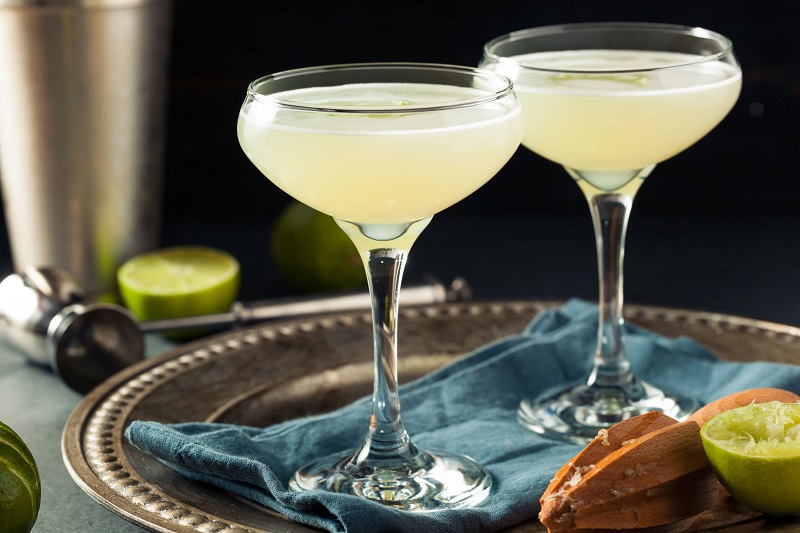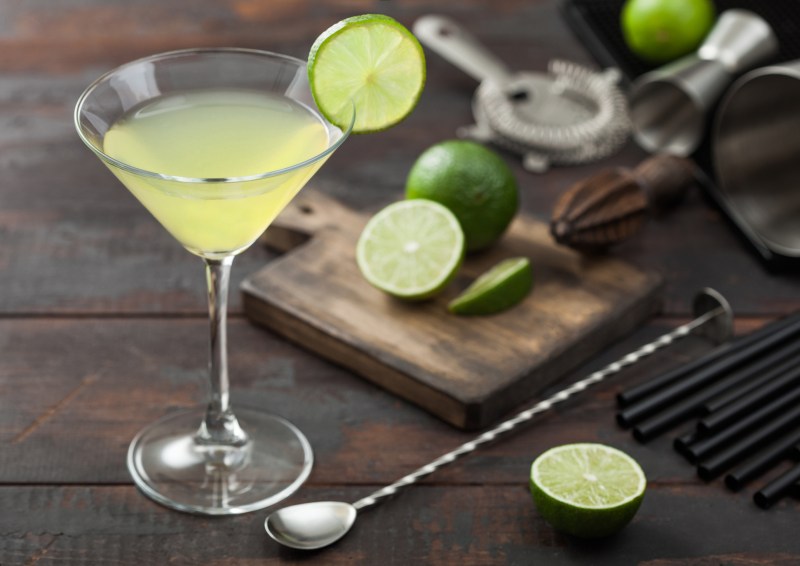Of all the cocktails that gin lovers hold in regard, one that stands out is the gin gimlet. Perhaps second only to the gin martini in the annals of the greatest gin cocktails, this drink shows off the flavors of gin with its rich botanticals to the best possible advantage. While some drinks are complex affairs that feature layers of flavors coming from many ingredients, the gin gimlet is quite the opposite: It has just two or three ingredients, and its beauty is in its simplicity.
The gimlet combines gin with sweetened lime juice to bring out the juniper and herbal, piney, or citrusy flavors that gins can offer. It’s pleasing to anyone from those new to cocktails to gin connoisseurs, as it is both easy to sip and a great way to experience the complexities of a new gin.
One of the most basic gin-based cocktails to prepare, in its bare bones form, the drink consists of only two parts: gin and lime cordial (the official recipe calls for Rose’s Lime Juice). It’s mostly gin with a little lime juice and is a fresh, light, tart, boozy drink that deserves to be in your cocktail rotation. Also, if you’re a fan of daiquiris, there’s an alternative version of the drink that consists of gin (instead of white rum), simple syrup, and lime juice.
Gin gimlet recipe

Ingredients:
- 2 ounces London dry gin
- 1 ounce Rose’s Lime Juice
- Garnish with a lime wheel
Method:
- Combine gin and sweetened lime juice in a shaker.
- Shake vigorously, strain into a cocktail glass, and garnish with a lime wheel.
Gin gimlet alternative version

While the original version of this drink was designed to use lime cordial, today, it’s often made with fresh lime juice and simple syrup instead. This version of the drink tends to be sharper and zingier, and it’s easier to customize the level of sweetness to your preferences by changing the amount of simple syrup that you use.
Ingredients:
- 2 ounces dry gin
- 3/4 ounce fresh lime juice
- 3/4 ounce simple syrup
Method:
- Add all ingredients to a shaker with plenty of ice and shake well.
- Strain into a coupe glass and garnish with a lime wheel.
Gin gimlet history

Like many classic cocktails (especially gin-based drinks), the gin gimlet is British through and through. The popular sweetened lime juice used in most recipes (Rose’s) is made in Edinburgh, Scotland. It was created in the late 1800s as a way to preserve citrus juice. He opted to preserve it with sugar instead of alcohol to create a bigger appeal for the product.
It is said that the cocktail was invented by a British Royal Navy Rear-Admiral named Sir Thomas Desmond Gimlette. Not surprisingly, scurvy was rampant among the Royal Navy in the late 1800s. Navy doctors prescribed lime juice so sailors would get enough vitamin C. But lime juice on its own is quite tart and bitter. Gimlette, it’s believed, suggested that the officers get their daily ration of gin (lower-ranking sailors got a ration of rum instead) and combine it with the lime juice to make it more palatable.
Others believe the drink was actually named for the gimlet, a tool used to drill some holes in wood, often found on ships. Like with all cocktails, it’s difficult to prove fact from fiction. It’s not fiction, though, that the first record of the drink was in 1923 when bartender Harry MacElhone of Harry’s New York Bar in Paris published the recipe. It consisted of Plymouth gin and Rose’s Lime Juice.
The gimlet debate
If you ask bartenders and peruse gin gimlet recipes online, you might notice that while some people prefer using sweetened lime juice, others prefer fresh lime juice and simple syrup (similar to a daiquiri but with gin instead of white rum). Some believe that the use of simple syrup and lime juice gives the drink a different, sweeter taste while the sweetened lime juice gives it the sweet, tart bite that drinkers prefer. We suggest ending the debate in your own home by mixing up both versions.
Ingredients matter
Just understand that, when it comes to a drink like the gimlet, paying attention to the recipe is important. Even though it’s simple, one misstep makes for a very unpalatable drink. We’re talking, of course, about lime juice. Be sure it’s sweetened. Otherwise, you’re in for a boozy, tart drink you might not enjoy all that much.
If you’re not about the store-bought lime cordials, you can also make your own. If you’re opting for the alternate version, simple syrup and fresh lime juice guarantee a sweet, citrus-driven drink. Just make sure you squeeze your juice out of an actual lime and not a tiny lime-shaped bottle.
What type of gin to use for a gimlet
A gin gimlet is traditionally made with a London dry-style gin, as the dryness complements the sweetness and fruitiness of the other ingredients. The best gimlets are made with good-quality, citrus-forward gin. As there are so few ingredients in the gimlet, it’s particularly important to use high-quality spirits that aren’t harsh and don’t have off-flavors.
You don’t need to splash out on very expensive gins to make a good gimlet though. One great choice for mixing citrus-forward cocktails is Tanqueray, which is well balanced and has a citrus and juniper tang but it still affordable. If you do want to push the boat out, a luxury gin like Brooklyn Gin is a great choice as it’s extremely smooth and has a lovely mouthfeel as well as sharp lemon flavors.




